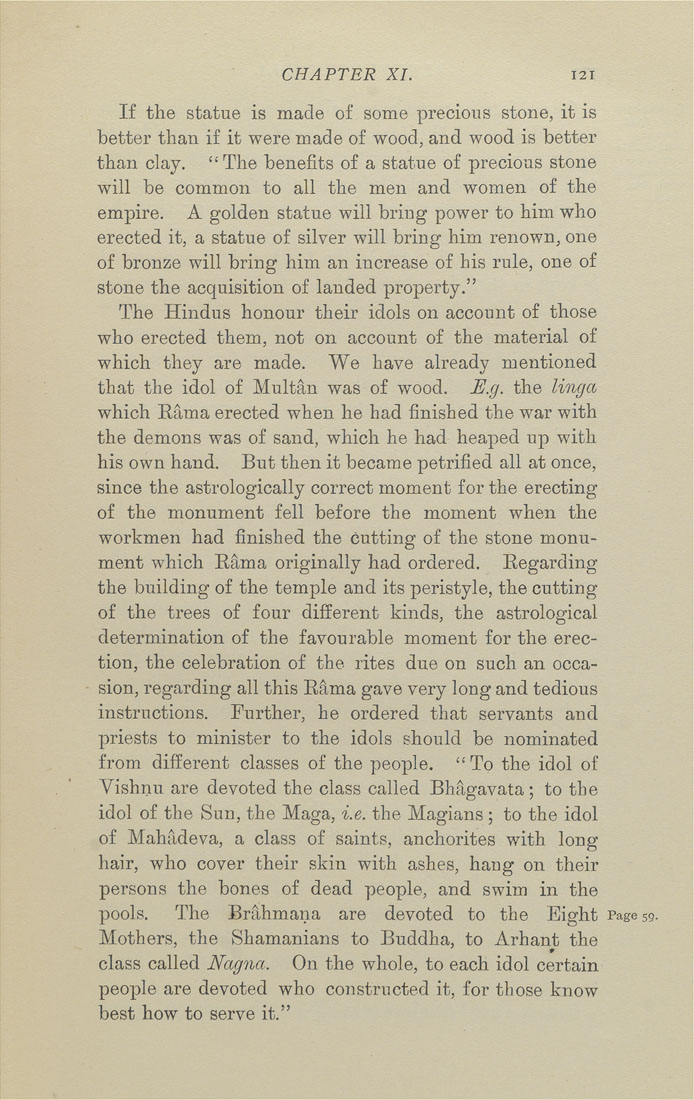Bīrūnī, Muḥammad ibn Aḥmad, Alberuni's India (v. 1)
(London : Kegan Paul, Trench, Trübner & Co., 1910.)
|
||
|
|
|
|
| Page 121 |

CHAPTER XI. If the statue is made of some precious stone, it is better than if it were made of wood, and wood is better than clay. "The benefits of a statue of precious stone will be common to all the men and women of the empire. A golden statue will bring power to him who erected it, a statue of silver will bring him renown, one of bronze will bring him an increase of his rule, one of stone the acquisition of landed property." The Hindus honour their idols on account of those who erected them, not on account of the material of which they are made. We have already mentioned that the idol of Multan was of wood. F.g. the linga which Rama erected when he had finished the war with the demons was of sand, which he had heaped up with his own hand. But then it became petrified all at once, since the astrologically correct moment for the erecting of the monument fell before the moment when the workmen had finished the cutting of the stone monu¬ ment which Rama originally had ordered. Regarding the building of the temple and its peristyle, the cutting of the trees of four different kinds, the astrological determination of the favourable moment for the erec¬ tion, the celebration of the rites due on such an occa¬ sion, regarding all this R^ma gave very long and tedious instructions. Further, he ordered that servants and priests to minister to the idols should be nominated from different classes of the people. " To the idol of Vishnu are devoted the class called Bhagavata; to the idol of the Sun, the Maga, i.e. the Magians; to the idol of Mahadeva, a class of saints, anchorites with long hair, who cover their skin with ashes, hang on their persons the bones of dead people, and swim in the pools. The Brahmana are devoted to the Eight Mothers, the Shamanians to Buddha, to Arhant the class called Nagna. On the whole, to each idol certain people are devoted who constructed it, for those know best how to serve it." |
| Page 121 |







